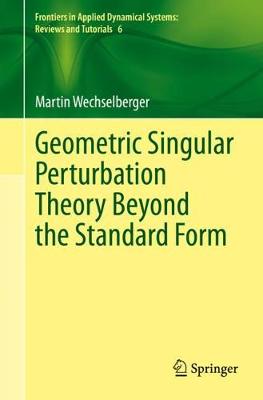Frontiers in Applied Dynamical Systems: Reviews and Tutorials
2 primary works
Book 1
Mathematical Analysis of Complex Cellular Activity
by Richard Bertram, Joel Tabak, Wondimu Teka, Theodore Vo, Martin Wechselberger, Vivien Kirk, and James Sneyd
This book contains two review articles on mathematical physiology that deal with closely related topics but were written and can be read independently.
The first article reviews the basic theory of calcium oscillations (common to almost all cell types), including spatio-temporal behaviors such as waves. The second article uses, and expands on, much of this basic theory to show how the interaction of cytosolic calcium oscillators with membrane ion channels can result in highly complex patterns of electrical spiking. Through these examples one can see clearly how multiple oscillatory processes interact within a cell, and how mathematical methods can be used to understand such interactions better. The two reviews provide excellent examples of how mathematics and physiology can learn from each other, and work jointly towards a better understanding of complex cellular processes.
Review 1: Richard Bertram, Joel Tabak, Wondimu Teka, Theodore Vo, Martin Wechselberger: Geometric Singular Perturbation Analysis of Bursting Oscillations in Pituitary Cells
Review 2: Vivien Kirk, James Sneyd: Nonlinear Dynamics of Calcium
Book 6
Geometric Singular Perturbation Theory Beyond the Standard Form
by Martin Wechselberger
This volume provides a comprehensive review of multiple-scale dynamical systems. Mathematical models of such multiple-scale systems are considered singular perturbation problems, and this volume focuses on the geometric approach known as Geometric Singular Perturbation Theory (GSPT).
It is the first of its kind that introduces the GSPT in a coordinate-independent manner. This is motivated by specific examples of biochemical reaction networks, electronic circuit and mechanic oscillator models and advection-reaction-diffusion models, all with an inherent non-uniform scale splitting, which identifies these examples as singular perturbation problems beyond the standard form.
The contents cover a general framework for this GSPT beyond the standard form including canard theory, concrete applications, and instructive qualitative models. It contains many illustrations and key pointers to the existing literature. The target audience are senior undergraduates, graduate students and researchers interested in using the GSPT toolbox in nonlinear science, either from a theoretical or an application point of view.
Martin Wechselberger is Professor at the School of Mathematics & Statistics, University of Sydney, Australia. He received the J.D. Crawford Prize in 2017 by the Society for Industrial and Applied Mathematics (SIAM) for achievements in the field of dynamical systems with multiple time-scales.

